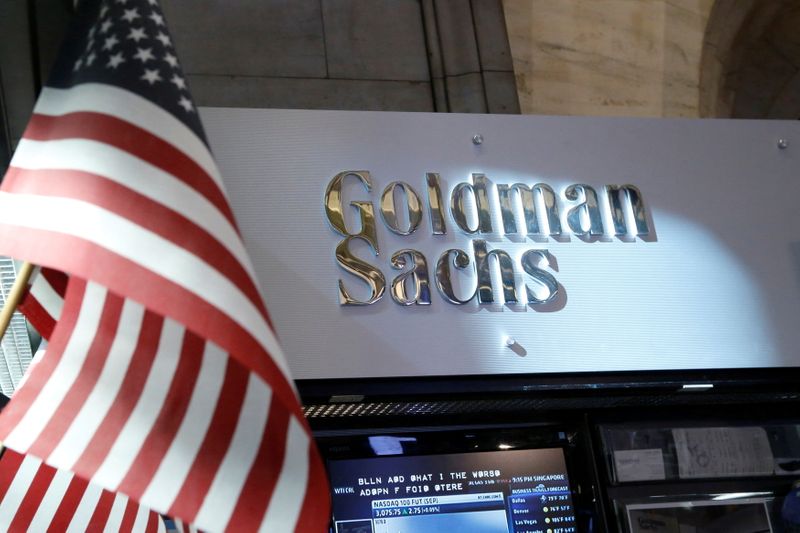(Reuters) – Goldman Sachs Group Inc on Friday reported a 66% surge in third-quarter profit that smashed expectations, as Wall Street’s biggest investment bank rode a record wave of M&A activity and initial public offerings.
The bank posted profits of $5.28 billion up from $3.23 billion a year ago, capping a stellar quarter for Wall Street lenders, which have benefited from a rebounding U.S. economy, soaring equity markets and a global deal-making bonanza.
Shares of Goldman Sachs were up 2% in mid-morning trading.
Global M&A volumes have shattered all-time records, with deals worth over $1.5 trillion inked by the world’s biggest investment banks in the third quarter, according to Refinitiv data.
Goldman comfortably held its top ranking as the world’s leading bank in M&A advisory, according to the Refinitiv data.
Those surging M&A fees drove Goldman Sachs’ overall financial advisory revenue up 225% to $1.65 billion, while underwriting revenue, which has been boosted by a rush of private companies looking to go public, surged 33% to $1.90 billion.
All told, Goldman’s investment bank boasted its second-best quarter ever, with total revenue of $3.70 billion, and executives said they expect revenues to continue to be strong.
“I remain optimistic about (opportunities),” Goldman Sachs Chief Executive Officer David Solomon said on a call with analysts. “Activity levels remain high particularly in investment banking.”
Earnings per share were $14.93 from $8.98 a year earlier, outstripping the $10.18 per share analysts had predicted, according to the IBES estimate from Refinitiv.
Goldman’s global markets trading business, which accounts for roughly 41% of overall revenue, reported revenue of $5.61 billion, up 23%.
The bank has been steadily expanding its prime brokerage business, where it handles trades for hedge funds, picking up clients and assets as other banks have trimmed their prime divisions. Additionally, it has gained market share when it comes to financing clients’ equity investing, according to its quarterly report.
Those gains in prime brokerage and equity financing helped Goldman roughly double its equity trading revenue this quarter to $3.1 billion from $2.1 a year ago. That was higher than rival Morgan Stanley, which reported trading revenue of $2.87 billion and is typically number one in this line of business.
Morgan Stanley said on Thursday that its third-quarter profit rose 38%, while JPMorgan Chase & Co reported a 24% rise. Citigroup Inc. and Bank of America Corp, which were likewise buoyed by deal fees and equities trading, increased profits by 48% and 64%, respectively. All the banks handily beat estimates.
“Clearly, upside was anticipated given what we’d seen from peers, but not this much upside,” Credit Suisse analyst Susan Roth Katzke wrote in a note to investors on Friday. “The beat was broad-based.”
CONSUMER BUSINESS
Goldman’s consumer business, though small, has been key to its diversification strategy.
As part of Chief Executive David Solomon’s strategy to build alternative revenue streams, Goldman is doubling down on Marcus, its consumer bank.
Since taking over from Lloyd Blankfein in 2018, Solomon has looked to diversify revenue, with more focus on consumer banking, mass-market wealth management and cash management.
Net revenue in Goldman’s consumer banking unit rose 17% to $382 million, reflecting higher credit card and deposit balances.
Total loans increased 28% to $143 billion in the quarter from a year earlier, a strong result in a mixed quarter for loan growth across Wall Street.
JPMorgan said on Wednesday that loans were up 5% across the bank compared with last year, while Citi was broadly flat.
Bank of America and Wells Fargo reported declines in loan growth year-on-year.
Total revenue surged 26% to $13.61 billion in the quarter, handily beating estimates.
(Reporting by Noor Zainab Hussain and Anirban Sen in Bengaluru, Elizabeth Dilts and Matt Scuffham in New York; Editing by Arun Koyyur and Nick Zieminski)

























